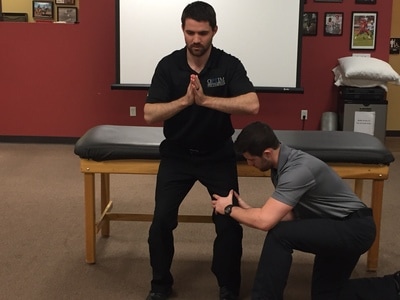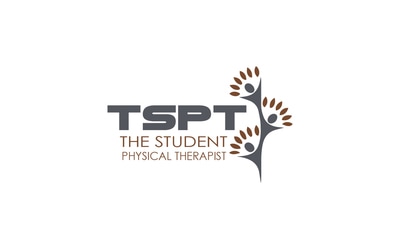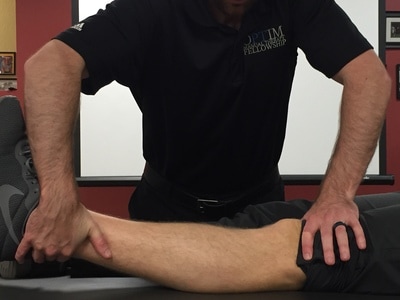- Home
- About Us
- TSPT Academy
- Online Courses
-
Resources
- Newsletter
- Business Minded Sports Physio Podcast
- Day in the Life of a Sports PT
- Residency Corner
-
Special Tests
>
-
Cervical Spine
>
- Alar Ligament Test
- Bakody's Sign
- Cervical Distraction Test
- Cervical Rotation Lateral Flexion Test
- Craniocervical Flexion Test (CCFT)
- Deep Neck Flexor Endurance Test
- Posterior-Anterior Segmental Mobility
- Segmental Mobility
- Sharp-Purser Test
- Spurling's Maneuver
- Transverse Ligament Test
- ULNT - Median
- ULNT - Radial
- ULNT - Ulnar
- Vertebral Artery Test
- Thoracic Spine >
-
Lumbar Spine/Sacroiliac Joint
>
- Active Sit-Up Test
- Alternate Gillet Test
- Crossed Straight Leg Raise Test
- Extensor Endurance Test
- FABER Test
- Fortin's Sign
- Gaenslen Test
- Gillet Test
- Gower's Sign
- Lumbar Quadrant Test
- POSH Test
- Posteroanterior Mobility
- Prone Knee Bend Test
- Prone Instability Test
- Resisted Abduction Test
- Sacral Clearing Test
- Seated Forward Flexion Test
- SIJ Compression/Distraction Test
- Slump Test
- Sphinx Test
- Spine Rotators & Multifidus Test
- Squish Test
- Standing Forward Flexion Test
- Straight Leg Raise Test
- Supine to Long Sit Test
-
Shoulder
>
- Active Compression Test
- Anterior Apprehension
- Biceps Load Test II
- Drop Arm Sign
- External Rotation Lag Sign
- Hawkins-Kennedy Impingement Sign
- Horizontal Adduction Test
- Internal Rotation Lag Sign
- Jobe Test
- Ludington's Test
- Neer Test
- Painful Arc Sign
- Pronated Load Test
- Resisted Supination External Rotation Test
- Speed's Test
- Posterior Apprehension
- Sulcus Sign
- Thoracic Outlet Tests >
- Yergason's Test
- Elbow >
- Wrist/Hand >
- Hip >
- Knee >
- Foot/Ankle >
-
Cervical Spine
>
- I want Financial Freedom
- I want Professional Growth
- I want Clinical Mastery
Lachman Test
Purpose: To assess the integrity of the ACL.
Test Position: Supine.
Performing the Test: The patient should be relaxed for this test, especially the tested extremity. The examiner places the tested leg into about 20 degrees of flexion, by placing the examiner's knee under the patient's thigh. Use one hand to stabilize the distal femur near the joint line on the anterior side, while palpating the joint line. Place the thumb of the other hand on the anterior side of the tibia and the fingers grasping the posterior side of the tibia near the joint line. Apply quick posterior-to-anteriorly directed forces through the tibia. There should be a firm end-feel. A positive test is excessive movement or the lack of a firm end-feel. An alternate method involves holding the femur and tibia without the examiner's knee under the patient's thigh. It is important that the correct joint angle is used for this test, because a position closer to full extension, naturally has less anterior translation of the tibia and can result in a false end-point ("Clinical diagnosis of an anterior cruciate ligament rupture: a meta-analysis").
Diagnostic Accuracy: Acute: Sensitivity: .94, Specificity: .97, +LR: 9.4, -LR: .1; Chronic: Sensitivity: .95, Specificity: .9, +LR: 7.1, -LR: .4 ("Clinical diagnosis of an anterior cruciate ligament rupture: a meta-analysis").
Importance of Test: The anterior cruciate ligament stabilizes against anterior translation of the tibia on the femur, due to the attachment at the anterior tibial plateau and posteriorly on the medial side of the lateral femoral condyle (Neumann 534). The force applied by the examiner stresses the ligament, and is a better test for assessing the integrity of the ACL in acute injuries compared to the Anterior Drawer Test for various reasons. The position of 20 degrees of knee flexion is a less painful position than the 90 degrees required for the Anterior Drawer Test; thus, there is a lower chance of protective spasms from the hamstrings. Also, in 20 degrees of flexion, the ACL is more maximally stressed and can be assessed more accurately, because other tissues due not limit anterior translation of the tibia ("Clinical diagnosis of an anterior cruciate ligament rupture: a meta-analysis"). It should be noted that patients with a torn PCL may test positive with a Lachman test. In the starting position of the Lachman test, the tibia will rest further posterior than usual due to the absence of the PCL, leading to increased excursion during the test (Manske, 2006). This means PCL integrity should be assessed prior to looking at ACL integrity. Often with ACL injuries, other tissues and structures can be injured as well. One of the more significant findings recently has been bone contusions with ACL injuries. Look for research on the topic coming out soon!
Note: these tests should only be used by properly trained health care practitioners
Test Position: Supine.
Performing the Test: The patient should be relaxed for this test, especially the tested extremity. The examiner places the tested leg into about 20 degrees of flexion, by placing the examiner's knee under the patient's thigh. Use one hand to stabilize the distal femur near the joint line on the anterior side, while palpating the joint line. Place the thumb of the other hand on the anterior side of the tibia and the fingers grasping the posterior side of the tibia near the joint line. Apply quick posterior-to-anteriorly directed forces through the tibia. There should be a firm end-feel. A positive test is excessive movement or the lack of a firm end-feel. An alternate method involves holding the femur and tibia without the examiner's knee under the patient's thigh. It is important that the correct joint angle is used for this test, because a position closer to full extension, naturally has less anterior translation of the tibia and can result in a false end-point ("Clinical diagnosis of an anterior cruciate ligament rupture: a meta-analysis").
Diagnostic Accuracy: Acute: Sensitivity: .94, Specificity: .97, +LR: 9.4, -LR: .1; Chronic: Sensitivity: .95, Specificity: .9, +LR: 7.1, -LR: .4 ("Clinical diagnosis of an anterior cruciate ligament rupture: a meta-analysis").
Importance of Test: The anterior cruciate ligament stabilizes against anterior translation of the tibia on the femur, due to the attachment at the anterior tibial plateau and posteriorly on the medial side of the lateral femoral condyle (Neumann 534). The force applied by the examiner stresses the ligament, and is a better test for assessing the integrity of the ACL in acute injuries compared to the Anterior Drawer Test for various reasons. The position of 20 degrees of knee flexion is a less painful position than the 90 degrees required for the Anterior Drawer Test; thus, there is a lower chance of protective spasms from the hamstrings. Also, in 20 degrees of flexion, the ACL is more maximally stressed and can be assessed more accurately, because other tissues due not limit anterior translation of the tibia ("Clinical diagnosis of an anterior cruciate ligament rupture: a meta-analysis"). It should be noted that patients with a torn PCL may test positive with a Lachman test. In the starting position of the Lachman test, the tibia will rest further posterior than usual due to the absence of the PCL, leading to increased excursion during the test (Manske, 2006). This means PCL integrity should be assessed prior to looking at ACL integrity. Often with ACL injuries, other tissues and structures can be injured as well. One of the more significant findings recently has been bone contusions with ACL injuries. Look for research on the topic coming out soon!
Note: these tests should only be used by properly trained health care practitioners
References:
Benjaminse A, Gokeler A, van der Schans CP. "Clinical diagnosis of an anterior cruciate ligament rupture: a meta-analysis." The Journal of orthopaedic and sports physical therapy. May 2006; 36(5):267-288.
Manske, Robert. Post-surgical Orthopedic Sports Rehabilitation: Knee and Shoulder. St. Louis, MO: Mosby Elsevier, 2006. 46-47. Print
Neumann, Donald. Kinesiology of the Musculoskeletal System: Foundations for Rehabilitation. 2nd edition. St. Louis, MO: Mosby Elsevier, 2010. 334. Print.
Benjaminse A, Gokeler A, van der Schans CP. "Clinical diagnosis of an anterior cruciate ligament rupture: a meta-analysis." The Journal of orthopaedic and sports physical therapy. May 2006; 36(5):267-288.
Manske, Robert. Post-surgical Orthopedic Sports Rehabilitation: Knee and Shoulder. St. Louis, MO: Mosby Elsevier, 2006. 46-47. Print
Neumann, Donald. Kinesiology of the Musculoskeletal System: Foundations for Rehabilitation. 2nd edition. St. Louis, MO: Mosby Elsevier, 2010. 334. Print.
Copyright © The Student Physical Therapist LLC 2023



